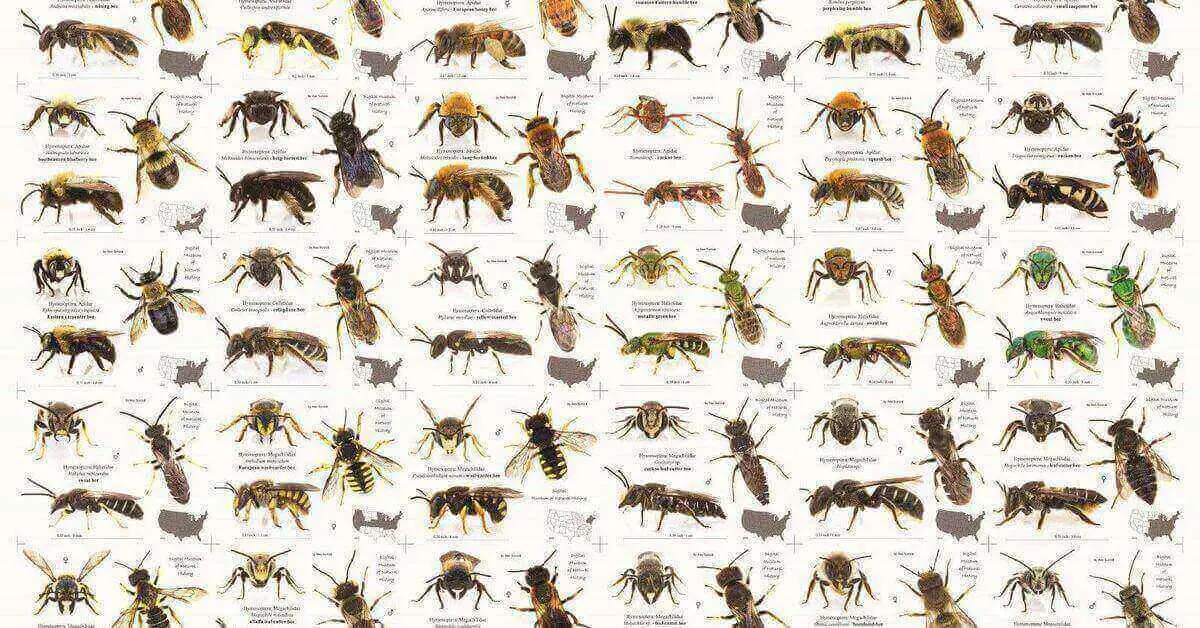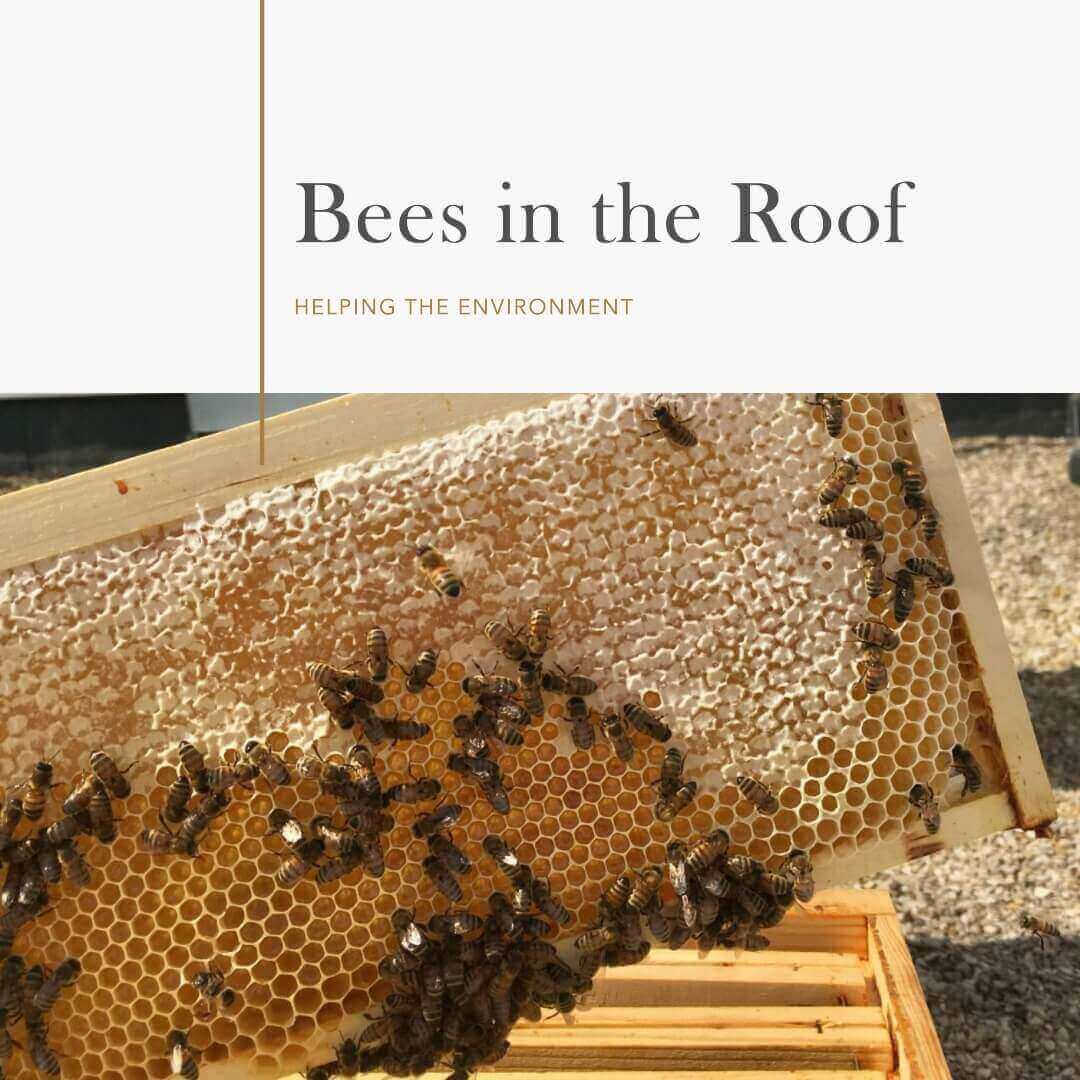Bees are mentioned several times in the Bible. Typically as their honey and their role as a symbol of diligence and hard work. In the Old Testament, bees are mentioned as a symbol of prosperity and hard work, while in the New Testament, they are used to illustrate the concept of the kingdom of God. In this article we write all information about bees in the Bible.
References of Bees & Honey in Bible.
In Deuteronomy 1:44:
The Israelites compared the Amorites who lived in the mountain to bees in the wilderness. They said that the Amorites came out against them, chased them, and destroyed them in Seir, even unto Hormah.
Deuteronomy 1:44:
Deuteronomy is part of Moses’ speech to the Israelites as they were about to enter the Promised Land. In Deuteronomy 1:44, Moses reminds the people of their fear and discouragement as they approached the land of Canaan and how they had spoken of returning to Egypt. This verse reminds them of their lack of faith and failure to trust God’s protection and provision.
In Judges 14:8:
Samson finds a swarm of bees in the carcass of a lion and takes honey from it. Which he later uses to sweeten his riddle for the Philistines.
Judges 14:8:
The story of Samson, one of the judges of Israel. In Judges 14:8. Samson finds a swarm of bees in the carcass of a lion that he had killed, and he takes the honey to his parents. The bees’ swarm symbolizes God’s provision and abundance, and the story of Samson finding honey in the lion’s carcass reminds him of God’s protection and care for his people.
In Proverbs 6:6-8:
The ant is compared to the sluggard, who should take its example of diligence. “Go to the ant, thou sluggard; consider her ways, and be wise. Which having no guide, overseer, or ruler, Provideth her meat in the summer, and gathereth her food in the harvest.”
Proverbs 24:31-34:
Part of a collection of wise sayings in the book of Proverbs. In Proverbs 24:31-34, the writer compares the attacker of a city to a swarm of bees and warns against attacking a city without proper preparation and planning. The image of a swarm of bees symbolizes the danger and ferocity of an attack. The verses serve as a reminder of the importance of caution and prudence in war.
In the New Testament, in Matthew 3:4:
John the Baptist is described as wearing clothing made of camel’s hair and a leather belt. They living on locusts and wild honey: “And the same John had his raiment of camel’s hair, and a leathern girdle about his loins, and his meat was locusts and wild honey.”
Matthew 3:4:
Verse of John the Baptist’s preaching and part of his message of repentance and preparation for the coming of Jesus. Matthew 3:4, John says, “John’s clothes were made of camel’s hair, and he had a leather belt around his waist. His food was locusts and wild honey.” The reference to wild honey symbolizes the simplicity and purity of John’s life. It serves as a reminder of the importance of living a righteous and holy life in preparation for the coming of the Messiah.
In Revelation 10:9:
An angel gives John a little book, telling him to eat it, which tastes as sweet as honey: “And I went unto the angel, and said unto him, Give me the little book. In Revelation 10:9: he said unto me, Take it, and eat it up; and it shall make thy belly bitter, but it shall be in thy mouth sweet as honey.”
Psalm 118:12:
This verse is part of a psalm of thanksgiving and expresses the psalmist’s joy and gratitude to God. In Psalm 118:12, the psalmist says, “They surrounded me like bees; they went out like a fire among thorns; in the name of the Lord, I cut them off!”. The image of bees surrounding the psalmist is a metaphor for his trials and tribulations. His cutting them off in the name of the Lord symbolizes his victory through God’s help.
Isaiah 7:18:
Isaiah is the part of a prophecy of judgment against the kingdom of Judah and speaks of God’s wrath against the people for their disobedience and idolatry. In Isaiah 7:18, the prophet Isaiah says, “On that day, the Lord will whistle for the flies from the Nile delta in Egypt to the Euphrates River in Assyria. They will settle on all the wooded heights and the fertile meadows.” The image of flies settling on the land is a metaphor for God’s judgment and the destruction that will come upon the people. And serves as a warning of the consequences of sin and rebellion against God.
References of honey in the Bible.
The Bible uses honey as a symbol of abundance, sweetness, and a source of nourishment. It frequently describes the land that flows with milk and honey, representing prosperity and goodness.
Exodus 3:8:
God speaks to Moses from a burning bush and tells him to return to Egypt to lead the Israelites out of slavery. God promises Moses that he will lead the people to a land “flowing with milk and honey.” This image of a land rich with natural resources, including honey, is often used throughout the Old Testament to represent the blessings and prosperity that come from following God’s commandments.
In Judges 14:
Samson finds a swarm of bees and honey in the carcass of a lion he had killed. He uses this discovery as a riddle, asking his wedding guests, “Out of the strong came forth, sweetness.” This verse highlights the unexpected goodness that can come from difficult circumstances.
In ancient times, honey was used as a sweetener and food source. The Israelites used it to make cakes, as described in Leviticus 2:11.
Overall, the Bible portrays honey as a symbol of God’s blessings and a source of nourishment and sweetness.
Related Articles:
- Bees In Quran: Symbol of Cooperation.
- Bee Infestation: How to Stay Safe
- Symbolism of Bees in Mythology & History.
- Do Bees Hibernate? Why do Bees Hibernate?
Reference of Bee Swarms in Bible.
Bee swarms are referenced in several places in the Bible, including the books of Exodus, Leviticus, Numbers, Deuteronomy, Judges, and Isaiah.
| In Exodus 10:13: | Bee swarms are used as a symbol of God’s punishment, with the swarm being a means of torment for Pharaoh and his people. |
| Leviticus 11:21-22: | Lists bee swarms as an unclean animal not to be consumed by the Israelites. |
| Numbers 13:33: | Mentions a report from the spies of the Promised Land, describing the land as having “a good land, a land flowing with milk and honey; here is the nest of the bee.” |
| Deuteronomy 1:44: | States that the Amorites were as numerous as “the sand on the seashore” and as difficult to defeat as “the bee which is in the land of Canaan.” |
| Judges 14:8: | Tells the story of Samson, who encounters a swarm of bees in the carcass of a lion he had killed, with the bees making honey. |
| Isaiah 7:18: | Predicts the future abundance of the land of Judah, saying, “On that day the Lord will whistle for flies from the Nile delta to the Wadi of Egypt, and bees from the land of Assyria.” |
Bees discussed in the Bible?
The Bible does not mention specific species of bees. The references to bees in the Bible are generally symbolic and refer to insects in general. The biblical references to bees reflect this importance and their symbolism as a symbol of hard work, wisdom, sweetness, provisions, and sometimes judgment.
Conclusion
The Bible is the Holy book which discusses bees honey and honeycomb. They have discussed bees many times but do not write the name bees. In different verses of the Bible the discussion is about honey and bees.




